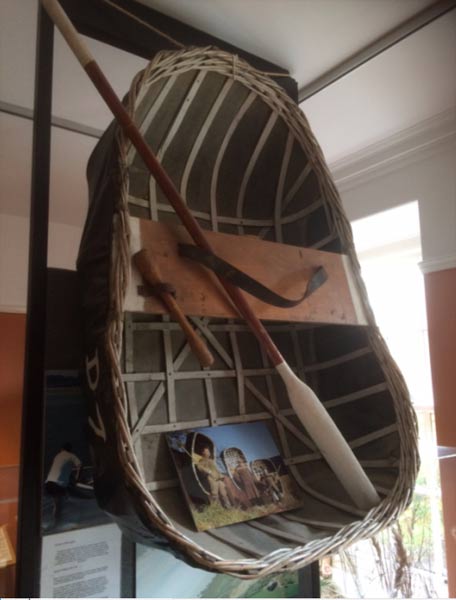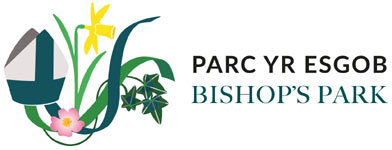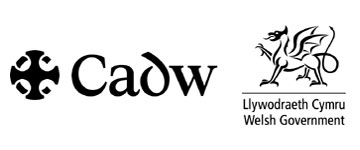The Old Bishop’s Palace
The connection between the Bishops of St Davids and Abergwili goes back over 700 years. It began at the end of the thirteenth century when Bishop Thomas Bek established a church college of 21 priests in Abergwili. This was at a time when the church owned extensive lands in the area and Abergwili was one of four towns in Carmarthenshire owned by the bishops of St Davids. The college Bek founded would remain in Abergwili until the mid sixteenth century.
In 1541, the then bishop, William Barlow, finding St Davids too remote a place to live; decided to move the college to Brecon so he could turn Abergwili into his new home. His palace would remain the home of the Bishop’s of St Davids for the next 431 years.
When Richard Davies became bishop in 1561 he turned the palace into the the home of the Welsh Renaissance. Artists, writers and poets came to Abergwili including William Salesbury, the leading Welsh scholar of the Renaissance. Whilst staying in Abergwili and working with Bishop Davies he produced the first welsh translations of both the New Testament and the Book of Common Prayer. Despite this within a few years of Davies’s death in 1581 the palace was described as being in most extreme ruin.
When under Charles I, William Laud became Bishop of St Davids he would only visit Abergwili twice. Despite this he did however leave a lasting legacy at Abergwili as the chapel on the first floor was built at his request. Bishop Laud consecrated the chapel when visiting for the second and last time in 1625. The chapel still remains today, though what we see now is the result of a major rebuild following a fire in 1903 that gutted the palace.

Bishop Laud’s Chapel before the fire of 1903
Courtesy of Carmarthenshire Museums

Laud’s Chapel today
Finding the palace in a run down state; between 1713 and 1722; a major refurbishment was undertaken by Bishop Adam Ottley at a cost of at least £370 – this is equal to a cost of several million pounds today. Yet only 35 years later the palace was again described as being in very poor condition.
Repairs must have been undertaken as Mary Morgan; a traveler towards the end of the 18th century praised the house, grounds and its valley setting saying that other writers had been too harsh in their criticism of the palace building in the past.

The palace kitchen
Bishop Lord George Murray carried out major alterations to the palace and grounds at the start of the nineteenth century. It was at this time that as a result of a severe flood in 1802 the River Tywi changed its course away from the Bishop’s Park. The rivers new course was further south across the valley floor, leaving only an ox-bow lake to reveal the site of its original course. This lake became known as the ‘Bishop’s Pond’ and remains today at the eastern end of the grounds a haven for wildlife and plants.
Only a few years after Murray’s rebuild in 1825 when John Jenkinson became bishop the palace was again in a state of near ruin. At his own expense, Bishop Jenkinson had the building almost completely rebuilt in the Elizabethan Style. After the works had been completed the palace was described as being ‘a noble mansion with a handsome Elizabethan aspect’ and ‘elegant and spacious’.

The palace and east lawn in 1870
Courtesy of Carmarthenshire Museums
The palace changed little over the remainder of the nineteenth century then in 1903 disaster struck. A chimney fire destroyed most of the building, including Laud’s Chapel. The palace was repaired between 1904 and 1907 during which time the bishop lived at Middleton Hall, Llanarthney.

The palace following the fire of 1903. Looking from the south east the chapel can be seen on the far left of the picture
Courtesy of Carmarthenshire Museums

The palace dining room around 1910
Courtesy of Carmarthenshire Museums
In 1972 a new Bishop’s Palace was built on land in front of the current building. This new palace remains the home of the Bishop’s of St Davids maintaining Abergwili’s long connection with the office.
The local authority took over the old palace and grounds in 1974 and four years later the palace was reopened as the new home to the fascinating Carmarthenshire County Museum.

A coracle on display in the museum; coracles have been used to fish the River Tywi for centuries












The Old Bishop’s Palace
The connection between the Bishops of St Davids and Abergwili goes back over 700 years. It began at the end of the thirteenth century when Bishop Thomas Bek established a church college of 21 priests in Abergwili. This was at a time when the church owned extensive lands in the area and Abergwili was one of four towns in Carmarthenshire owned by the bishops of St Davids. The college Bek founded would remain in Abergwili until the mid sixteenth century.
In 1541, the then bishop, William Barlow, finding St Davids too remote a place to live; decided to move the college to Brecon so he could turn Abergwili into his new home. His palace would remain the home of the Bishop’s of St Davids for the next 431 years.
When Richard Davies became bishop in 1561 he turned the palace into the the home of the Welsh Renaissance. Artists, writers and poets came to Abergwili including William Salesbury, the leading Welsh scholar of the Renaissance. Whilst staying in Abergwili and working with Bishop Davies he produced the first welsh translations of both the New Testament and the Book of Common Prayer. Despite this within a few years of Davies’s death in 1581 the palace was described as being in most extreme ruin.
When under Charles I, William Laud became Bishop of St Davids he would only visit Abergwili twice. Despite this he did however leave a lasting legacy at Abergwili as the chapel on the first floor was built at his request. Bishop Laud consecrated the chapel when visiting for the second and last time in 1625. The chapel still remains today, though what we see now is the result of a major rebuild following a fire in 1903 that gutted the palace.
Bishop Laud’s Chapel before the fire of 1903
Courtesy of Carmarthenshire Museums
Laud’s Chapel today
Finding the palace in a run down state; between 1713 and 1722; a major refurbishment was undertaken by Bishop Adam Ottley at a cost of at least £370 – this is equal to a cost of several million pounds today. Yet only 35 years later the palace was again described as being in very poor condition.
Repairs must have been undertaken as Mary Morgan; a traveler towards the end of the 18th century praised the house, grounds and its valley setting saying that other writers had been too harsh in their criticism of the palace building in the past.
The palace kitchen
Bishop Lord George Murray carried out major alterations to the palace and grounds at the start of the nineteenth century. It was at this time that as a result of a severe flood in 1802 the River Tywi changed its course away from the Bishop’s Park. The rivers new course was further south across the valley floor, leaving only an ox-bow lake to reveal the site of its original course. This lake became known as the ‘Bishop’s Pond’ and remains today at the eastern end of the grounds a haven for wildlife and plants.
Only a few years after Murray’s rebuild in 1825 when John Jenkinson became bishop the palace was again in a state of near ruin. At his own expense, Bishop Jenkinson had the building almost completely rebuilt in the Elizabethan Style. After the works had been completed the palace was described as being ‘a noble mansion with a handsome Elizabethan aspect’ and ‘elegant and spacious’.
The palace and east lawn in 1870
Courtesy of Carmarthenshire Museums
The palace changed little over the remainder of the nineteenth century then in 1903 disaster struck. A chimney fire destroyed most of the building, including Laud’s Chapel. The palace was repaired between 1904 and 1907 during which time the bishop lived at Middleton Hall, Llanarthney.
The palace following the fire of 1903. Looking from the south east the chapel can be seen on the far left of the picture
Courtesy of Carmarthenshire Museums
The palace dining room around 1910
Courtesy of Carmarthenshire Museums
In 1972 a new Bishop’s Palace was built on land in front of the current building. This new palace remains the home of the Bishop’s of St Davids maintaining Abergwili’s long connection with the office.
The local authority took over the old palace and grounds in 1974 and four years later the palace was reopened as the new home to the fascinating Carmarthenshire County Museum.
A coracle on display in the museum; coracles have been used to fish the River Tywi for centuries